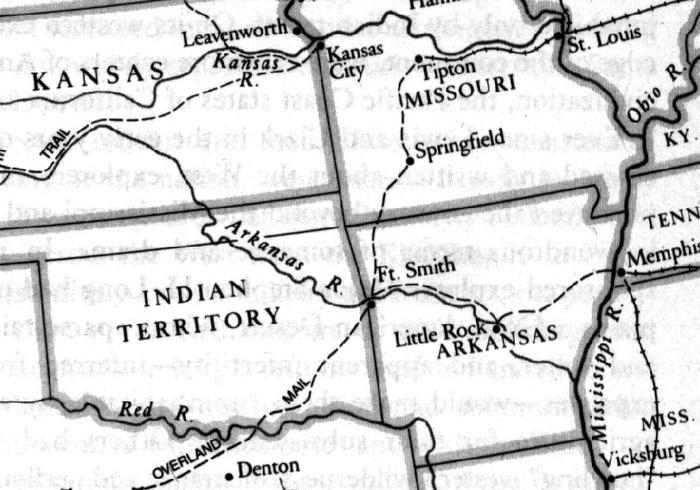|
|
Indian Territory

In U.S. history, name applied to the country set aside for Native Americans by the Indian Intercourse Act (1834). In the 1820s, the Federal government began moving the Five Civilized Tribes (Cherokee, Creek, Seminole, Choctaw, and Chickasaw) of the Southeast to lands W of the Mississippi River. The Indian Removal Act of 1830 gave the President authority to designate specific lands for them, and in 1834 Congress formally approved the choice. The Indian Territory included present-day Oklahoma N and E of the Red River, as well as Kansas and Nebraska; the lands were delimited in 1854, however, by the creation of the Kansas and Nebraska territories. Tribes other than the original five also moved there, but each tribe maintained its own government. As white settlers continued to move westward, pressure to abolish the Indian Territory mounted. With the opening of W Oklahoma to whites in 1889 the way was prepared for the extinction of the territory, achieved in 1907 with the entrance of Oklahoma into the Union. The Native American Heritage
Oklahoma has a rich Native American heritage. The Native American population is the largest in the nation; the 1990 census reported 252,420 Native Americans in Oklahoma. Several indigenous cultures existed in the area before the first European visited there in 1541. Francisco Coronado almost certainly crossed Oklahoma in that year, and Hernando De Soto may have visited E Oklahoma. Later Juan de Oate passed through W Oklahoma, and some other Spanish explorers and traders and French traders from Louisiana visited the region, but there was no development of the area.
Native Americans dominated the landscape, tribes of the Plains culturesOsage, Kiowa, Comanche, and Apachein the west, and the Wichita and other relatively sedentary tribes farther east. It is asserted that the first European trading post was established at Salina by the Chouteau family of St. Louis before the territory was transferred to the United States by the Louisiana Purchase in 1803, but the land remained in control of the sparse and nomadic Native American population. For the most part only traders, official explorers (notably Stephen H. Long), and scientific and curious travelers (among them Washington Irving and George Catlin) came into the present-day state.
In 1819 the Adams-Ons Treaty with Spain defined Oklahoma as the southwestern boundary of the United States. After the War of 1812 the U.S. government invited the Cherokee of Georgia and Tennessee to move into the area, and a few had come to settle. Soon intense white pressure for their lands, with the approval of President Andrew Jackson, forced the Cherokee and the others of the Five Civilized Tribes (the Choctaw, the Chickasaw, the Creek, and the Seminole) to abandon their old homes east of the Mississippi and to take up residence in what was to become the Indian Territory. Their tragic removal is known as the Trail of Tears. They settled on the hills and little prairies of the eastern section and built separate organized states and communities.
The Cherokee particularly had a highly Europeanized culture, with a written language, invented by their great leader Sequoyah, and highly developed institutions. Some of the Cherokee were slaveholders and ran their agricultural properties in the traditional Southern plantation pattern; others were small farmers. The Five Civilized Tribes clashed briefly with the Plains Indians, particularly the Osage, but they were for a time free from white interference, and they were able to establish a civilization that strongly affected the whole history of the region.
The troubles of the whites did not, however, long escape them, and the Civil War was a major disaster. Although no major battle of the war was fought in present-day Oklahoma, there were numerous skirmishes. Most Native Americans allied themselves with the Confederacy, but Unionist disaffection was widespread, and individual violence was so prevalent that many fled, leaving their farms to desolation.
As a punishment for taking the Confederate side the Five Civilized Tribes lost the western part of the Indian Territory, and the Federal government began assigning lands there to such landless eastern tribes as the Delaware and the Shawnee, as well as to nomadic Plains tribes, who put up strong resistance before they were subdued and settled on reservations. The territory was plagued by lawlessness and served as a hideout for white outlaws. After the establishment of a Federal court at Fort Smith, Isaac Parker became famous as the hanging judge. |
|
|
|
|
 Native American Nations
Native American Nations
